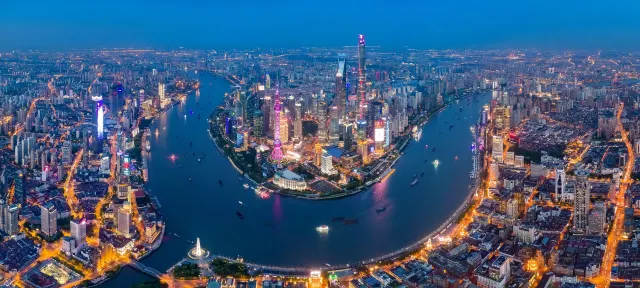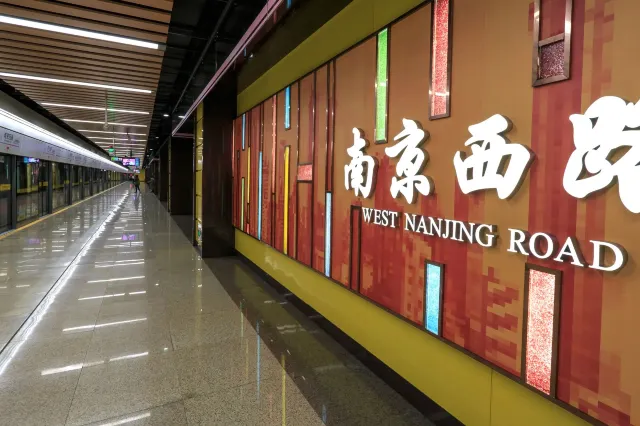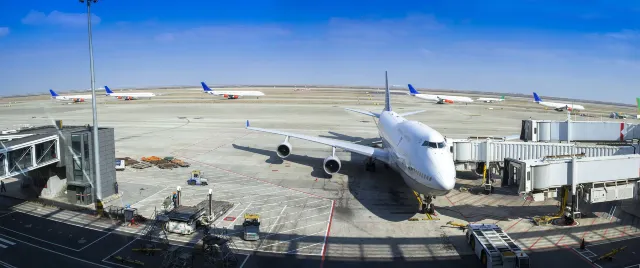Shanghai Travel Guide: What to Know Before You Visit Shanghai
Catalogue
- 1. Shanghai Travel Guide - China Highlights
- 2. Shanghai Transportation: Flights
- 3. Shanghai Transportation: Trains, Buses, Taxis
- 4. Best Times to Visit Shanghai
- 5. Top 3 Things to Do in Shanghai, China
- Yu Garden
- The Bund
- Lujiazui
- 6. Great dishes you can get in Shanghai
- 7. Shopping in Shanghai
- 8. Local Lifestyle of Shanghai
- Public Security
- Food & Water Safety
- Currency
- Religion
- Culture
- Sustainability
Show More
Shanghai, known as the "Pearl of the Orient," is a vibrant and cosmopolitan city located on the eastern coast of China. As one of the world's largest and most populous cities, Shanghai is a global financial center and a bustling hub of culture, commerce, and innovation.
With a rich history dating back thousands of years, Shanghai seamlessly blends traditional Chinese heritage with modern architecture and technology. From its iconic skyline adorned with towering skyscrapers to its picturesque waterfront promenade, the city offers a captivating mix of old-world charm and contemporary allure.
Shanghai's dynamic atmosphere, diverse culinary scene, world-class shopping, and thriving arts and entertainment make it a must-visit destination for travelers seeking an unforgettable experience in China.

The Bund is one of Shanghai's most famous attractions
If you're exploring Shanghai on foot, be extra careful when crossing streets. Vehicles can turn right even at a red light, and chances are they may not stop to give way to pedestrians.
Don't be alarmed when you're pushed in the metro. Taking public transport in Shanghai is a definitely an experience of its own, especially if it's your first visit in China. Just note that you should stand back from the doors the moment you hear the "door closing" alarm.

West Nanjing Road Station
You'll realize that mobile payment is the most popular way of paying for meals and goods. There might even be instances where your CNY100 bill gets refused during payment because the cashier doesn't have enough change for your payment. If you're paying your way through Shanghai with cash, consider breaking your larger notes at any of Shanghai's convenience stores.
To avoid the busiest seasons in Shanghai, be sure to check China's holiday calendar for when Spring Festival and Golden Week - China's biggest national holidays - occur.
We recommend choosing a hotel in Shanghai closest to the Shanghai Metro, especially the metro station has multiple lines. People's Square, West Nanjing Road, Xujiahui, and Century Avenue are some Shanghai's hubs, offering 3 lines of the Shanghai Metro within their respective stations.
If you're looking to travel neighboring cities around Shanghai, China's high-speed rail system can get you to cities including Suzhou, Nanjing, Hangzhou, and Ningbo in less than an hour. Popular railway stations include Shanghai South Railway Station, Shanghai Railway Station, and Shanghai Hongqiao Railway Station.
Shanghai is served by Shanghai Pudong International Airport (PVG) and Shanghai Hongqiao International Airport (SHA).
If you're traveling to Shanghai internationally, chances are you'll land at Shanghai Pudong International Airport (PVG). The airport is located approx. 40 km (25 miles) from downtown Shanghai. The most convenient way to get to downtown Shanghai from Shanghai Pudong International Airport (PVG) is by taxi. Taxis are located outside the Arrivals Level of both terminals. The journey takes around 40–50 minutes, and costs between CNY150–200 (US$23–30). Consider landing at Shanghai Pudong International Airport (PVG) after 19:00 to avoid getting stuck in traffic.

Shanghai Pudong International Airport
The quickest way of getting from Shanghai Pudong International Airport (PVG) to downtown Shanghai is via Maglev Train - known for being the fastest train journey in the world. The Maglev Train takes 8 minutes to get from Shanghai Pudong International Airport to Longyang Road station, where passengers can then transfer onto Line 2 of the Shanghai Metro. The entire journey would take approx. 35 minutes. The Maglev Train runs every 15–20 minutes, from 07:02–23:42 daily. One-way tickets cost CNY50 (US$8), and round-trip tickets cost CNY80 (US$13).
If you're flying into Shanghai Hongqiao International Airport (SHA), the most convenient way of getting to downtown Shanghai is via taxi. The airport is located approx. 12 km (8 miles) from downtown Shanghai. Taxis can be found outside the Arrivals Level of both terminals. The journey takes approx. 20 minutes, and costs between CNY65–97 (US$10–15). For a cheaper way of getting from Shanghai Hongqiao International Airport (SHA) to downtown Shanghai, both Line 2 and 10 of the Shanghai Metro are available at Terminal 2 of the airport. It takes around 20 minutes to get downtown by metro, and costs between CNY3–5 (US$0.45–0.80).
Shanghai's extensive public transport system has made getting around the city fuss-free. The most recommended way of getting around Shanghai is via the Shanghai Metro. With over 17 metro lines already open, and a few more under construction, one would never have to worry about being stuck in Shanghai's notorious traffic. One-way tickets cost between CNY3–9 (US$0.45–1.40) depending on distance traveled. Alternatively, One-Day Passes are available for CNY18 (US$2.80) at all Shanghai Metro stations.
Shanghai's bus system is more extensive than the Metro, with several routes operating past the closing time of the Metro. All buses are air-conditioned, and costs a flat fee of CNY2 (US$0.30). Consider having exact change ready for the bus conductor, as most of them do not speak English. Once inside the bus, stops are announced in Mandarin, English, and Shanghainese, over the P.A. system.
On-demand taxi services in Shanghai are fairly affordable, and are a convenient way of getting around the city, especially during off-peak hours. What some might find intimidating is communicating with the taxi drivers. A great tip is to have the address of your destination in Chinese written down, or displayed on your phone, to show the driver upon boarding. If you're getting in a taxi from your hotel in Shanghai, get one of the hotel's service staff to help communicate your destination with the driver.
Shanghai experiences a humid subtropical climate.
Spring is Shanghai's busiest period for tourism, and lasts from March through May. The months of March and April are cool, with highs averaging at 17°C (approx. 62°F), and lows averaging at 8°C (approx. 46°F). Shanghai starts getting warmer in May, with comfortable highs of 26°C (approx. 79°F), and temperate lows of 17°C (approx. 62°F). We recommend bringing a coat with you if you're visiting between March and April, but if you're visiting in May, a light jacket will suffice.
Summer lasts from June through August, with average highs of 32°C (approx. 90°F). Shanghai also experiences its ""Plum Rain"" monsoon season for a month, seeing significant rainfall. If you're traveling to Shanghai during the summer, expect heat and humidity. We recommend you pack an extra change of clothes.
Autumn is one of the busiest seasons of the year in Shanghai, falling between September through November. Temperatures feel comfortable, with warm highs averaging at 23°C (approx. 74°F), and cool lows averaging at 16°C (approx. 61°F). Consider packing a light jacket for those cool evenings.
Winter in Shanghai typically lasts from December through February, and is usually the quietest time of year for tourists. It rarely snows in Shanghai, but winters can still get quite cold and damp. Shanghai is coldest in January, with lows averaging at 1°C (approx. 34°F), and a possibility of below freezing temperature. If you're visiting Shanghai in December and February, temperatures will still be cold, but won't go below freezing. Highs average at 10°C (approx. 50°C), and lows average at 3°C (37°F).
How much you'll get to see and do in Shanghai depends on the duration of your visit. Here are some of our favorite sights to see in Shanghai.
First built in 1559 during the Ming Dynasty, Yu Garden, also known as Yuyuan, is Shanghai's oldest green space. The area consists of an outer and an inner garden. Located on Anren Road, next to the City God Temple, the gardens are accessible from Yuyuan Garden metro station via Line 10. Yuyuan Bazaar leads visitors into Yu Garden, featuring a variety of souvenir stores and eateries. The Outer Garden consists of Sansui Hall, Wanhua Chamber, Dianchun Hall, Hujing Hall, and Yuhua Hall. The Inner Garden features rockeries, ponds, pavilions, and towers.
Around a 20-minute walk from Yu Garden is one of Shanghai's most famous attractions, The Bund - or Waitan. The promenade stretches 1.5 km (approx. 0.9 miles) along the western bank of the Huangpu River, and faces the modern skyscrapers of Lujiazui, located across the river in Pudong District. The colonial-style historical buildings along The Bund once housed several banks and trading houses, as well as the Russian and English consulates. We recommend visiting The Bund right before sunset, to await the spectacular lighting-up of the buildings that surround the promenade.
Lujiazui, the central business district of Shanghai, is home to the city's tallest, and most iconic, skyscrapers. For a bird's eye view of Shanghai, the Oriental Pearl Tower, Jinmao Tower, and the Shanghai World Financial Center are just some of the skyscrapers equipped with top-floor observatories. To get the highest view of Shanghai, head over to the Shanghai Tower - the second-tallest building in the world. The tower stands 632m (2,073 ft), with an astonishing 127 floors above ground. The Shanghai Tower Observation Deck is located on the 118th floor of the tower, and requires you to take the world's fastest elevator. Enjoy panoramic views of the Huangpu River, Puxi, and several other surround skyscrapers from there.
Shanghai cuisine is famous for its sugary and oily local cuisine. Street food in Shanghai often come in the form of hole-in-walls, with limited options to choose from. Must-try local Shanghainese dishes include Xiaolongbao - a soup dumpling, Shengjianbao - a fried breaded dumpling, and Hongshao Rou - red braised pork belly. If you're visiting in the fall and winter, get your pincers on some Dazhaxie - hairy crab.

Dazhaxie
If you don't speak the language, what helps is simply pointing at the food item, and indicating how many you'd like with your hand. A number of local restaurants also have images of their dishes on the menu, which helps with food ordering. Our top recommendation for experiencing local fare is to head over to People's Square, where you'll find hundreds of establishments lining the streets of - and adjacent to - Huanghe Road and Guizhou Road. Alternatively, tour agencies including UnTour Food Tours, provide hassle-free food tours around the city in English - they even offer dumpling-making classes!
The dining scene in Shanghai has gotten increasingly international, offering a wide range of cuisines from around the globe at affordable prices. In the Former French Concession, you'll easily find an Italian Pizzeria next to an American sports bar, adjacent to a Turkish restaurant. Xintiandi offers a complex of higher-end restaurants in their Shikumen-style complex. Celebrity chefs including Jean-Georges Vongeritchen, Umberto Bombana, and Jason Atherton are a few of the many chefs who've received tremendous success in Shanghai.
Shanghai truly is a shopper's paradise. Mid-range to upscale malls flood the central districts of Jing'an, Changning, Huangpu, and Xujiahui. Small boutiques fill the Former French Concession streets.
Nanjing Road is famed for its shopping mecca. The world-renowned 6-mile-long road spans across the Jing'an and Huangpu Districts, offering high-end shopping malls in the west, and a pedestrian street of small specialty stores in the east.
Described as the "Champs Elysees of the Orient", Huaihai Road's international shopping street stretches over 3 miles, and is divided into 3 parts. Find luxury brands and stylish boutiques in the upscale malls - Xintiandi Plaza and Hong Kong Plaza, connected to South Huangpi metro station via an underpass. Specialty food stores and lifestyle brands occupy the storefronts of old European-style buildings on Huaihai Middle Road. Down the South Sha'anxi Station end, you'll find Parkson Mall and IAPM.
For a more curated shopping experience, explore the alleyways of Tianzifang - a shopping and café area in the Former French Concession. The French-colonial compound, located outside Exit 1 of Dapuqiao metro station, is filled with hundreds of crafts shops, design studios, boutiques, novelty stores, bars, and cafes. The preserved Shikumen-style buildings are still inhabited with residents, making for quite the shopping experience!
Shanghai is one of the safest cities in China, where violent crime is rare, and streets are safe to walk about at night.
Tap water in Shanghai is safe for teeth brushing, but not safe for consumption, unless boiled. Bottled water is widely available in all convenience stores, supermarkets, and dining areas.
Chinese Yuan (元/¥), otherwise known as Renminbi (RMB)
Religion is not widely practiced in Shanghai, but you'll find Buddhist temples, Protestant and Catholic churches, and mosques around the city.
Modern day Shanghai fuses Western cultures with the local Wuyue culture.
Since 2018, the local Shanghainese government has stepped up their environmental protection efforts. To date, most hotels in Shanghai have stopped providing disposable toiletries, most vehicles are electric, and the use of plastic bags and containers have been banned.
Trending Travelogues
Popular Travel Types
Popular Attractions
Popular Ranked Lists
Popular Destinations
Recommended Attractions at Popular Destinations









Site Operator: Trip.com Travel Singapore Pte. Ltd.





